You have an Azure Stack Hub integrated system that connects to the Internet. The integrated system uses an Azure Active Directory (Azure AD) identity provider.
You need to update the Azure App Service resource provider.
Which two actions should you perform? Each correct answer presents part of the solution.
NOTE: Each correct selection is worth one point.
Answer:
AB
Reference:
https://docs.microsoft.com/en-us/azure-stack/operator/azure-stack-app-service-update?view=azs-2008&pivots=state-connected
You have an Azure Stack Hub integrated system that uses an Active Directory Federation Services (AD FS) identity provider and capacity-based billing.
You have a plan named Plan1 that has the following quota configurations for Microsoft.Compute:
✑ Maximum number of Availability Sets: 10
✑ Maximum number of virtual machines: 50
✑ Maximum number of virtual machine cores: 100
✑ Maximum number of virtual machine scale sets: 10
You link two offers named Offer1 and Offer2 to Plan1.
Two user subscriptions named Customer1 and Customer2 are created based on Offer1. A user subscription named Customer3 is created based on Offer2.
Customer1 receives a warning that it provisioned 50 virtual machines.
You need to ensure that Customer1 can provision an additional 25 virtual machines within its existing subscription. The solution must NOT affect the quotas of the other user subscriptions.
Which two actions should you perform? Each correct answer presents part of the solution.
NOTE: Each correct selection is worth one point.
Answer:
AD
Reference:
https://docs.microsoft.com/en-us/azure-stack/operator/service-plan-offer-subscription-overview?view=azs-2008 https://docs.microsoft.com/en-us/azure-stack/operator/create-add-on-plan?view=azs-2008
You have an Azure Stack Hub integrated system that connects to the Internet.
You are migrating several Hyper-V workloads to Azure Stack Hub. Billing for the workloads is consumption-based.
You need to predict the ongoing Microsoft subscription charges for the workloads.
You run an Azure Migrate assessment and receive the output shown in the following table.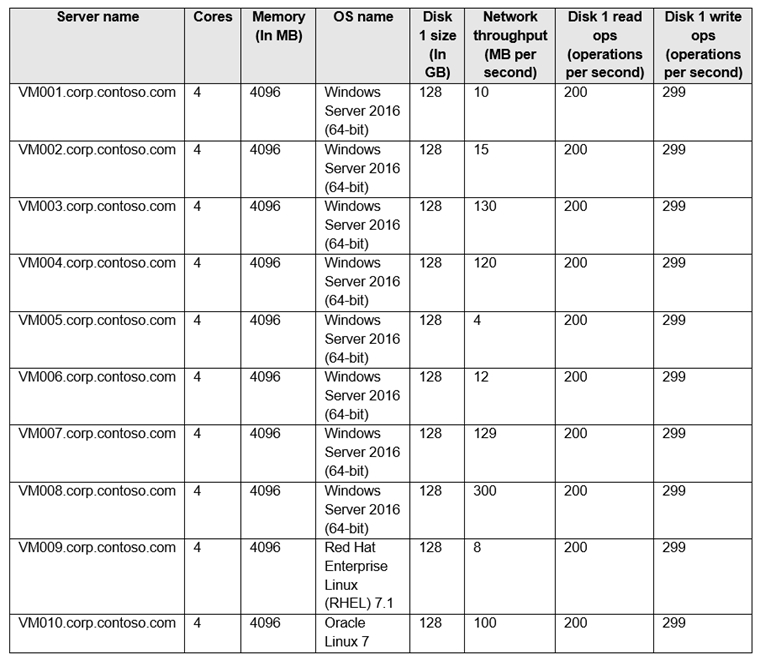
The values from which three columns affect the ongoing Microsoft subscription charges? Each correct answer presents a complete solution.
NOTE: Each correct selection is worth one point.
Answer:
ACD
Reference:
https://docs.microsoft.com/en-us/azure-stack/operator/azure-stack-usage-related-faq?view=azs-2008
Your company is a Cloud Solution Provider (CSP) that provides Azure Stack Hub services to multiple customers in a multitenant environment.
User subscriptions are linked to Azure CSP subscriptions for billing reconciliation.
You need to view the usage of all the customers for the current day and the last seven days.
What should you do?
Answer:
B
Reference:
https://docs.microsoft.com/en-us/azure-stack/operator/azure-stack-provider-resource-api?view=azs-2008
You have an Azure Stack Hub integrated system.
You need to create a new offer that can be used only by an operator to provision user subscriptions. The solution must simplify the process for users to create resources.
Which type of offer should you create?
Answer:
B
Reference:
https://docs.microsoft.com/en-us/azure-stack/operator/azure-stack-delegated-provider?view=azs-2008
You have an Azure Stack Hub integrated system that connects to the Internet.
You need to enable multitenant billing.
What should you do first?
Answer:
D
Reference:
https://docs.microsoft.com/en-us/azure-stack/operator/azure-stack-csp-howto-register-tenants?view=azs-2008&tabs=az
You plan to deploy a highly available Azure App Service resource provider to an Azure Stack Hub integrated system.
You need to ensure that the App Service resource meets the prerequisites. The solution must minimize costs.
Which two resources should you deploy? Each correct answer presents part of the solution.
NOTE: Each correct selection is worth one point.
Answer:
AC
Reference:
https://blog.apps.id.au/adventures-cloud-operator-highly-available-app-service-1-4-azure-stack-step-2-deployment/
HOTSPOT -
You have an Azure Stack Hub integrated system that is disconnected from the Internet. The integrated system is registered to an Azure Active Directory (Azure
AD) tenant named contoso.com.
You need to download the latest Ubuntu image for Azure Stack Hub Marketplace.
How should you complete the PowerShell script? To answer, drag the appropriate cmdlets to the correct targets. Each cmdlet may be used once, more than once, or not at all. You may need to drag and split the bar between panes to scroll to view content.
NOTE: Each correct selection is worth one point.
Hot Area: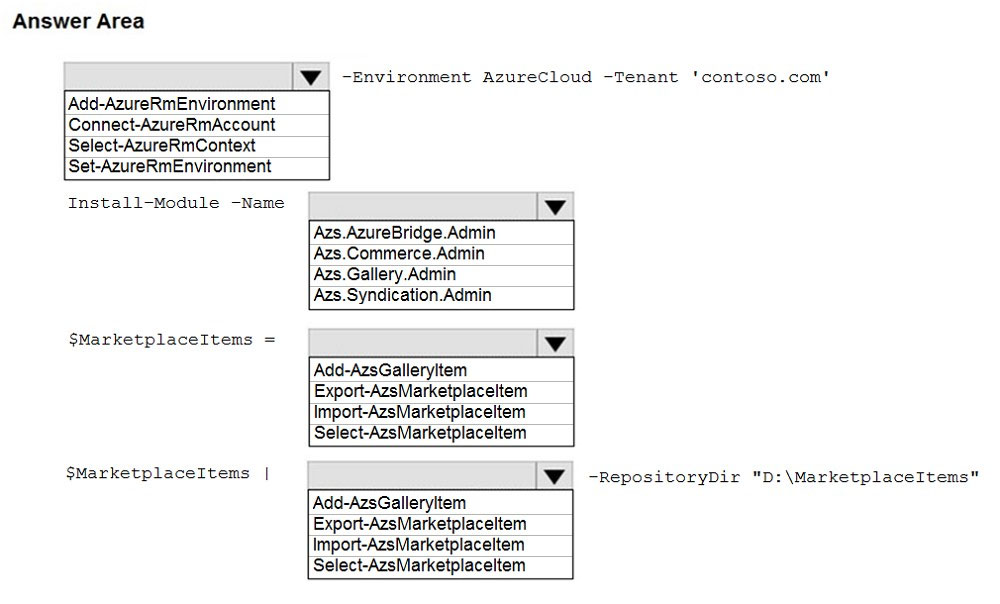
Answer:
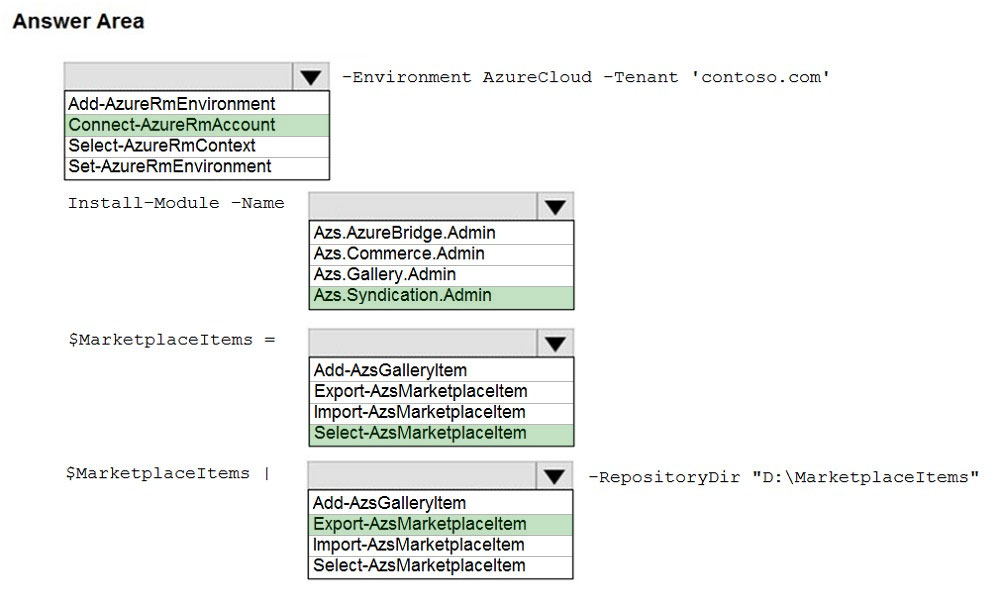
Reference:
https://docs.microsoft.com/en-us/azure-stack/operator/azure-stack-download-azure-marketplace-item?view=azs-2008&tabs=az1%2Caz2&pivots=state- disconnected
DRAG DROP -
You have an Azure Stack Hub integrated system.
You need to delegate the management of offers to a user named User1.
Which three actions should you perform in a sequence? To answer, move the appropriate actions from the list of actions to the answer area and arrange them in the correct order.
Select and Place: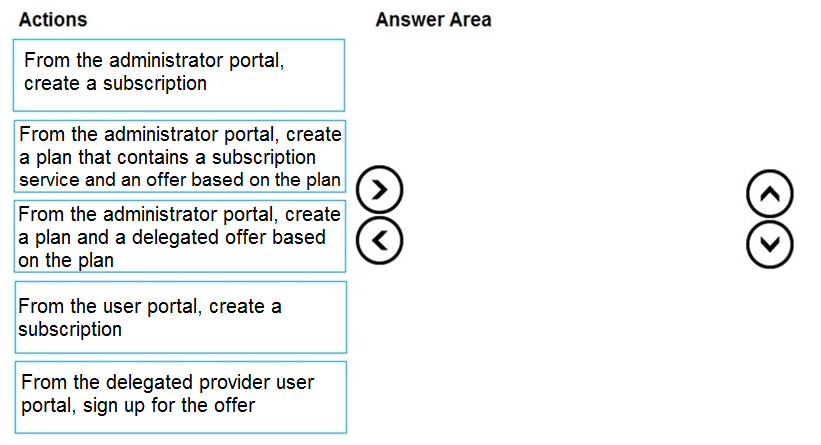
Answer:
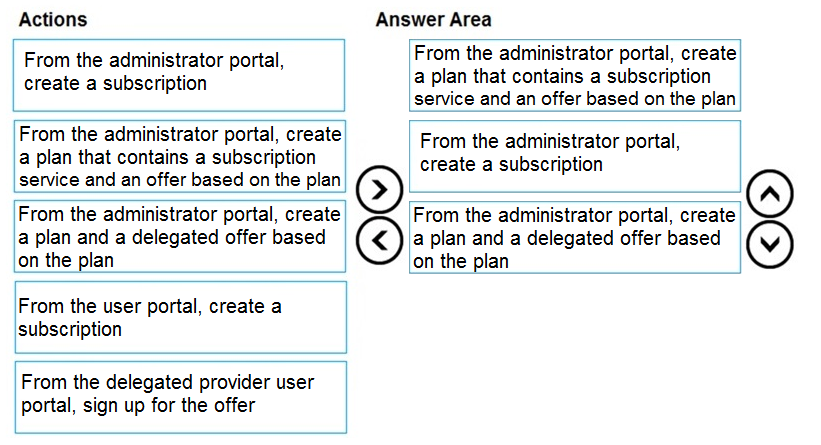
Reference:
https://docs.microsoft.com/en-us/azure-stack/operator/azure-stack-delegated-provider?view=azs-2008
Note: This question is part of a series of questions that present the same scenario. Each question in the series contains a unique solution that might meet the stated goals. Some question sets might have more than one correct solution, while others might not have a correct solution.
After you answer a question in this section, you will NOT be able to return to it. As a result, these questions will not appear in the review screen.
You have an Azure Stack Hub integrated system that connects to the Internet. The integrated system uses an Enterprise Agreement (EA) for licensing.
You are creating an Azure Resource Manager template to generate a marketplace item for a virtual machine that runs Windows Server 2019 Datacenter and a custom application.
You need to ensure that Windows Server is licensed by using the bring-your-own-license model.
Solution: You add OsType: Windows to the Azure Resource Manager template.
Does this meet the goal?
Answer:
B